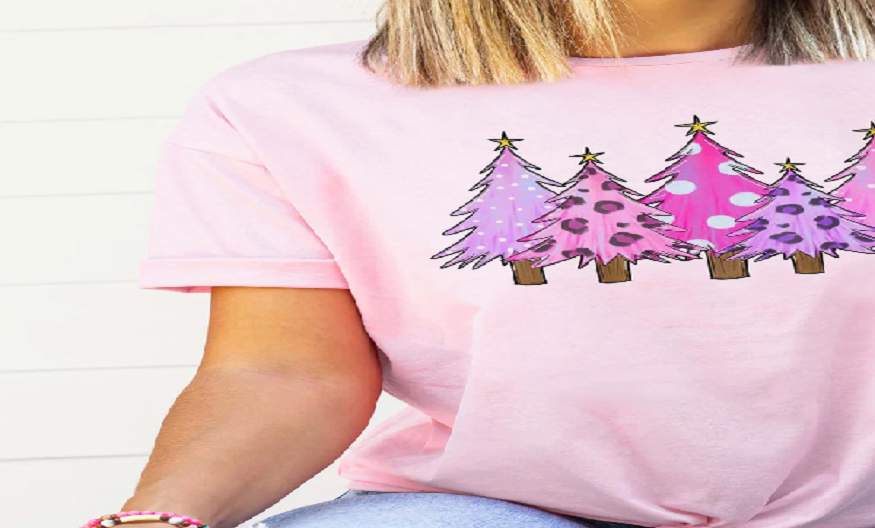
Sublimation and heat transfer vinyl are popular techniques for creating custom apparel and personalized goods. This article compares the two methods, outlining their differences, benefits, and considerations to help you choose the right technique for your project while checking the use of sublimation vs vinyl and vice versa.
In custom apparel and personalized goods, two popular techniques stand out: Heat Transfer Vinyl (HTV) and Sublimation. This article compares vinyl vs sublimation exploring their unique advantages and drawbacks. HTV offers ease of use and versatility, while Sublimation boasts vibrant, long-lasting colours. Whether you’re considering DIY T-shirt customization or creating personalized mugs, understanding the differences between these techniques will help you make an informed decision. Let’s explore the exciting world of customizations using HTV vs Sublimation!
Benefits and drawbacks of heat transfer vinyl
Benefits
- Versatility: HTV can be applied to various fabrics, including cotton, polyester, and blends, making it suitable for various apparel customization projects.
- DIY-Friendly: It is relatively easy to use, making it a popular choice for at-home crafters and small-scale projects.
- Precise Designs: HTV allows for intricate and detailed designs, thanks to its precise cutting capabilities with a cutting machine.
- Layering Options: You can layer different colours of HTV to create multi-colour designs, adding depth and complexity to your creations.
Drawbacks
- Limited Durability: HTV may not withstand frequent washing and long-term wear and other printing methods, leading to potential peeling or fading over time.
- Texture: Depending on the thickness of the vinyl used, the application can result in a slightly raised or textured finish on the fabric.
- Colour Limitations: HTV does not offer the same colour vibrancy and range as Sublimation, which can affect the final appearance of the design.
- Time-Consuming: Applying HTV requires precise alignment and heat pressing, which can be time-consuming for large-scale projects.
Benefits and drawbacks of sublimation
Benefits
- Vibrant Colors: Sublimation produces vibrant and high-quality prints with a wide colour gamut, creating eye-catching designs with exceptional colour reproduction.
- Long-lasting Results: Sublimation ink becomes a part of the fabric or coating, offering excellent durability, washability, and resistance to fading or cracking over time.
- Seamless Designs: Sublimation allows for full-colour printing without the limitations of separate layers, resulting in smooth, continuous designs with intricate details.
- Large-Scale Production: It is well-suited for mass production as the printing process is efficient and doesn’t require individual cutting or weeding.
Drawbacks of Sublimation:
- Limited Fabric Compatibility: Sublimation works best on polyester or polyester-coated surfaces, limiting its application to certain fabrics and materials.
- Specialized Equipment: The sublimation process requires specialized printers, inks, and heat presses, making the initial setup cost higher than other printing methods.
- White Background Requirement: Sublimation ink is transparent, so it requires a white base or light-coloured substrate to display colours accurately. Dark-coloured fabrics are not suitable for sublimation.
- Learning Curve: Mastering the sublimation process, including colour management and heat press settings, may take some time and experimentation.
Making Your T-shirt with Vinyl:
Process:
- Design: Create or select the design you want to apply to the T-shirt using design software or choose a pre-made design.
- Cut the Vinyl: Load the selected HTV sheet into a cutting machine and let it cut the design precisely.
- Weeding: Remove the excess vinyl from the cut design using a weeding tool, leaving only the desired design on the carrier sheet.
- Heat Press: Preheat the heat press to the recommended temperature. Place the T-shirt on the heat press and position the vinyl design.
- Heat Transfer: Close the heat press, applying firm pressure and heat to adhere the vinyl to the fabric. Follow the recommended time and temperature settings for the specific HTV material.
- Peel and Enjoy: Once the transfer time is complete, carefully peel off the carrier sheet, revealing your custom-designed T-shirt.
Materials Needed:
– Heat Transfer Vinyl sheets in your desired colours.
– Cutting machine (e.g., Cricut or Silhouette) for precise cutting.
– Weeding tool to remove excess vinyl.
– Heat press machine to apply the design onto the fabric.
– Plain T-shirt made of cotton, polyester, or a blend.
Creating Your Mug with Sublimation:
Process:
- Design: Use graphic design software to create or select the design you want to print on the mug.
- Print the Design: Using a sublimation printer, print the design onto sublimation paper using sublimation ink. Make sure to mirror the design for correct printing.
- Wrap the Mug: Wrap the sublimation paper around the mug, ensuring the design faces the mug’s surface.
- Heat Press: Set the heat press to the recommended temperature and time. Place the wrapped mug into the heat press and apply even pressure and heat.
- Sublimation Process: The sublimation ink will turn into gas under heat, bonding with the mug’s surface. As the mug cools, the ink will solidify, creating a permanent, vibrant design.
- Remove the Wrap: Carefully remove the sublimation paper wrap from the mug.
- Cool and Enjoy: Allow the mug to cool down before using or gifting it.
Materials Needed:
– Sublimation printer with sublimation ink.
– Sublimation paper for printing the design.
– Sublimation heat press machine.
– Sublimation-compatible mugs with a polyester coating.
Conclusion
The choice between Heat Transfer Vinyl vs Sublimation depends on your specific needs and preferences. HTV is ideal for small-scale projects and simpler designs, while Sublimation is perfect for vibrant, high-quality prints on a larger scale. Consider the pros and cons of each method before deciding which one suits your customization requirements best.
